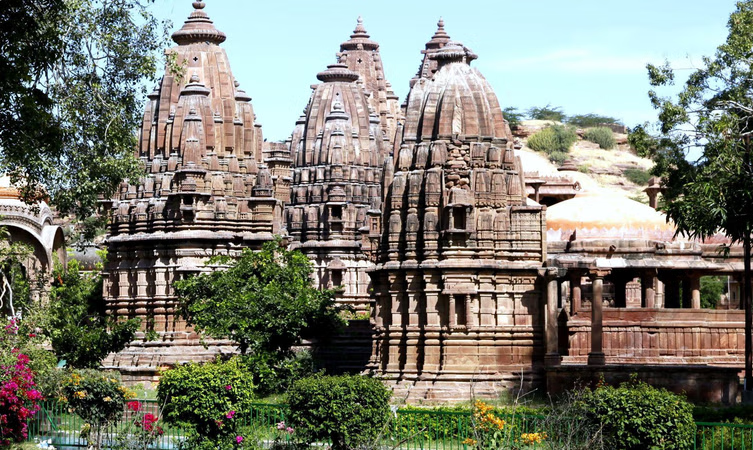Mandore Gardens, located about 9 km north of Jodhpur, is a historic site that served as the capital of the Marwar region before Jodhpur was founded. The gardens are particularly famous for their unique cenotaphs, which are memorials to the rulers of Jodhpur. These cenotaphs are not typical umbrella-shaped structures but are built in the style of Hindu temples, with intricate carvings, spires, and elaborate columns.
The most notable temples and religious sites within Mandore Gardens include:
- Royal Cenotaphs (Chhatris): These are the main attraction of the gardens. They are grand, multi-storied structures made of red sandstone that resemble temples. The cenotaph of Maharaja Ajit Singh is particularly prominent, known for its size and detailed carvings. The cenotaphs honor various rulers and members of the Rathore dynasty.
- Hall of Heroes: This is a gallery dedicated to Rajput folk heroes and deities. It features 16 statues carved from a single rock, and the walls are adorned with colorful paintings depicting the stories and battles of these heroes.
- The Temple of 33 Crore Gods: This is a large Hindu temple filled with brightly colored images and statues of a vast pantheon of Hindu deities. The name “33 Crore” refers to the concept of the countless gods and goddesses in Hinduism.
- Ravana Temple: Mandore is believed to be the birthplace of Mandodari, the wife of the demon king Ravana from the epic Ramayana. As a result, Ravana is considered a son-in-law of the city, and a temple dedicated to him can be found here.
In addition to these, the gardens also house a government museum with artifacts and relics from the region, and the ruins of the old Mandore Fort are on a hill nearby.
